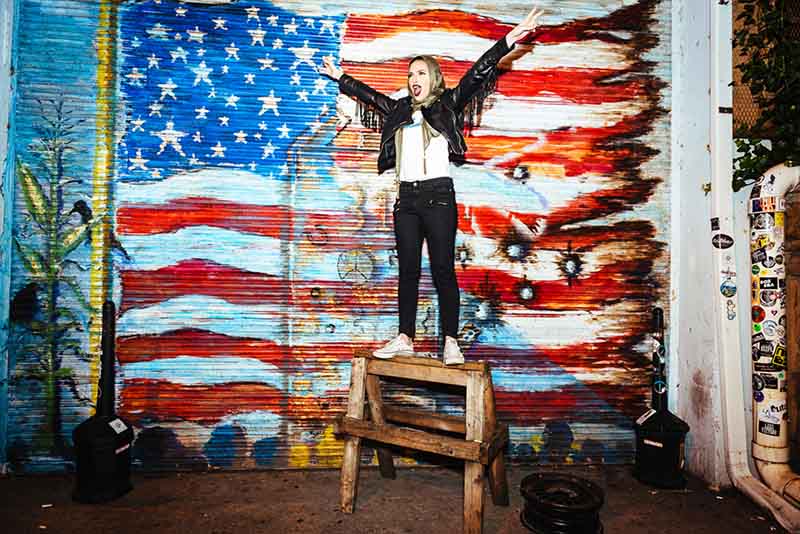Playboy was once one of the most recognizable magazines on the planet: a glossy cultural artifact synonymous with counterculture, controversy, and a particular kind of glossy, male-centered fantasy.
For decades, it defined an era where print media shaped desire, rebellion, and even political discourse. Its interviews were legendary, its centerfolds iconic, and its influence so widespread that the Playboy bunny became as recognizable as any global brand. But as the internet matured, the very thing that made Playboy infamous, the allure of images once considered risqué or taboo, became instantly accessible everywhere, for free, and in far more explicit forms.
What once required a magazine quietly purchased from a shelf was now just a click away, and the mystique Playboy had built its empire on began to evaporate.
Slowly, the digital age bled Playboy dry.
As Playboy has put an end to featuring nude models, it has named Noor Tagouri as its model, and quickly, controversies spark.

Noor Tagouri has a compelling story to begin with, which began way before being the a groundbreaking Playboy feature.
Born in West Virginia to Libyan immigrant parents, she grew up navigating multiple identities at once: Muslim, American, Libyan, woman, outsider, insider, all while living in a place where almost no one else looked like her. She has described her upbringing as both isolating and transformative, a childhood filled with moments where she felt misunderstood, misrepresented, or invisible.
Over time, those experiences became the foundation of her mission: to reshape the narratives surrounding marginalized communities by telling their stories accurately, empathetically, and without compromise.
This experience forged her passion towards journalism.
She began interning at news stations as a teenager and using social media to build a portfolio before she even finished college. By the age of 20, she had already graduated and begun using digital platforms to advocate for representation, particularly for Muslim women who rarely saw themselves reflected in American newsrooms.
Her #LetNoorShine campaign was launched, years before her Playboy appearance, made to encourage young people to embrace their identity unapologetically and sparked conversations across social platforms.

It positioned her not just as a reporter, but as a community figure, someone whose voice resonated far beyond traditional journalism.
Her on-camera presence was natural, confident, and refreshingly direct. As she moved into documentary and investigative work, Tagouri became known for her ability to gain trust from people who often felt burned or misrepresented by traditional news outlets. She has said repeatedly that being a hijabi journalist gives her a unique lens.
And this helps her connect deeply with interviewees who have experienced discrimination, trauma, or social stigma.
People open up to her because she understands what it feels like to have your story told poorly, or not at all.
"Being a hijabi Muslim woman helps me gain trust. I say, 'I know what it’s like to be misrepresented in the media. I won’t do that to you,'" she said.
Noor is also a public speaker, filmmaker, and host of "Sold in America," a critically acclaimed investigative podcast exploring the U.S. sex trade, a project that blended journalism, advocacy, and human-centered storytelling.
The West Virginia native and first-generation Libyan American, had appeared on the 2015 TEDx talk, advocated unapologetic individuality
In other words, Noor has challenged expectations placed on Muslim women.
Whether she’s reporting from the field, speaking at universities, or appearing in a fashion campaign, she pushes back against the idea that modesty, professionalism, and personal expression are mutually exclusive. Her work often centers on elevating voices that mainstream media ignores, and she has become a symbol of what representation looks like when it’s not watered down or tokenized.
Her philosophy is simple but powerful: Muslim women should tell their own stories, define their own image, and make their own choices, without being boxed in by cultural expectations from any side. That belief has allowed her to step into spaces few expected, challenge institutions many don’t question, and redefine what a modern Muslim journalist can look like in American media.
This is what caught Playboy's interest.
It was her winding, intentional path, and how she portrayed herself as a minority in the many parts of the world that was uncomfortable seeing hijabi women that led her there.
This is why Noor modeled as Playboy's 2016 Renegades, which are for people who are 'rule breakers,' and this case, thanks to her dream of becoming one of the first hijab-wearing anchor-women on national U.S. television.

Despite criticism, whether from those who believe she pushes boundaries too far, or others who think she doesn’t push them enough.
Still, she remains focus on doing what she does best.
In the end, Noor Tagouri is not famous because she posed for Playboy.
Noor, whose name means "light" in Arabic, is celebrated for forging her own path and for embodying a generation that won’t wait for permission to be visible.
On social media, Tagouri has gained something of a cult following.
After campaigning on social media back in 2012 with #LetNoorShine, the hashtag has once again came back to life since her Playboy feature, along with other shows of support.

As for Playboy, which is struggling with print journalism, with all the blames go to the internet, felt the impact.
Online adult content surged, social media reshaped beauty standards, and attention spans shifted toward fast, infinite-scroll entertainment.
The brand attempted reinvention after reinvention: removing nudity, restoring nudity, pivoting to lifestyle reporting, leaning into digital, and repositioning itself as a sort of retro-cool cultural artifact.
Through all of that turbulence, one thing remained constant: Playboy never stopped being a symbol.
Love it or criticize it, the magazine retained an undeniable cultural weight: a weird mix of nostalgia, rebellion, and American pop-cultural mythology that refuses to fully disappear.
Even as it fights for relevance in a world that no longer needs it, Playboy remains an emblem of a bygone era, still capable of sparking debate, shaping headlines, and igniting conversations about identity, autonomy, and the evolution of media itself.
